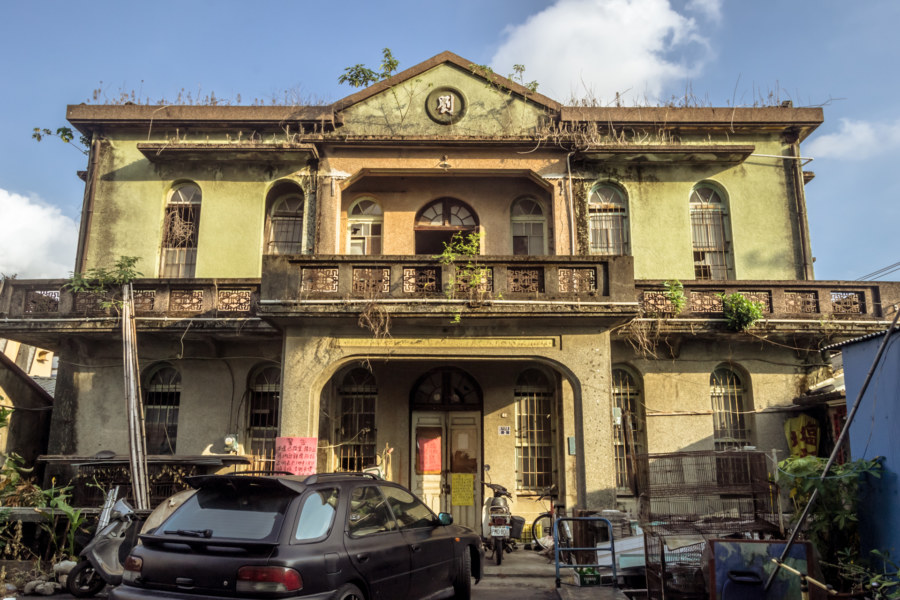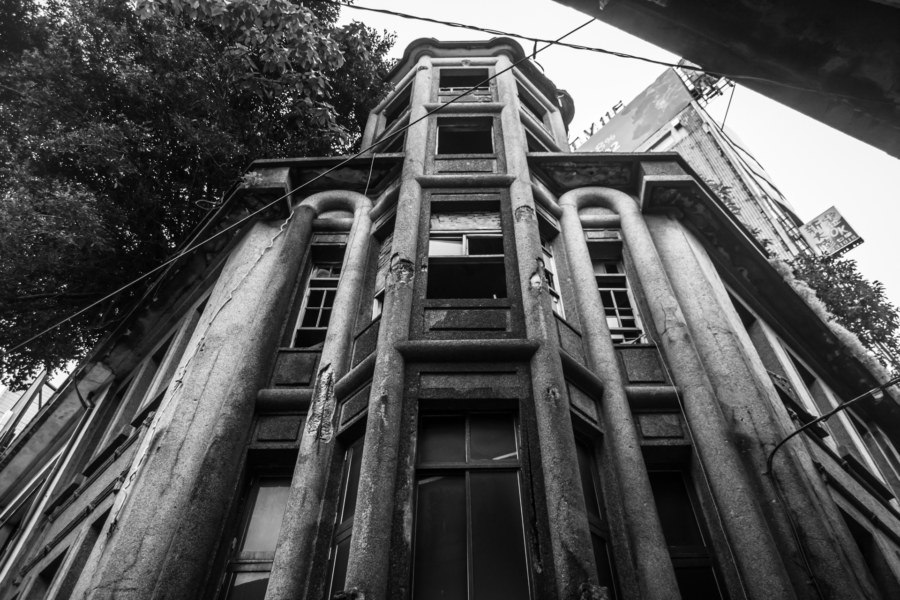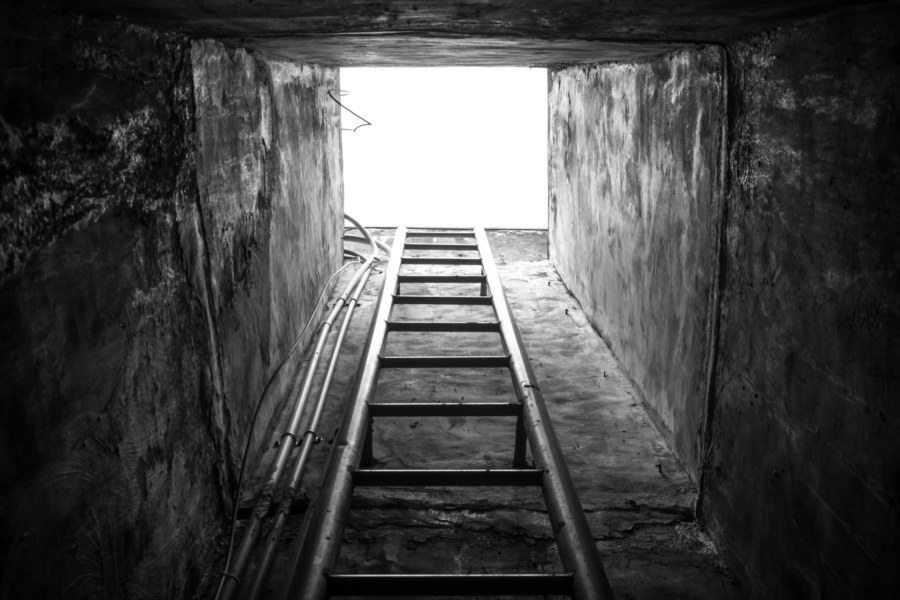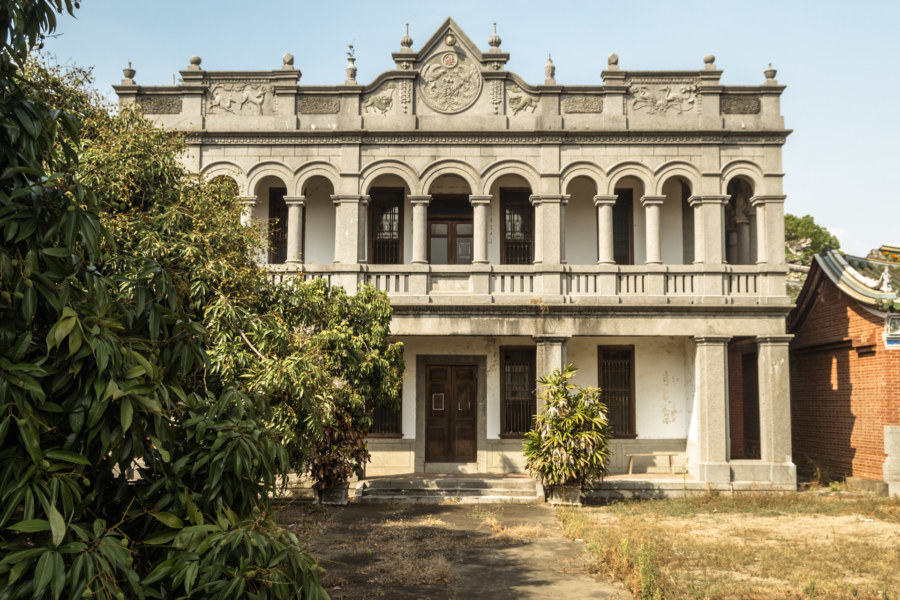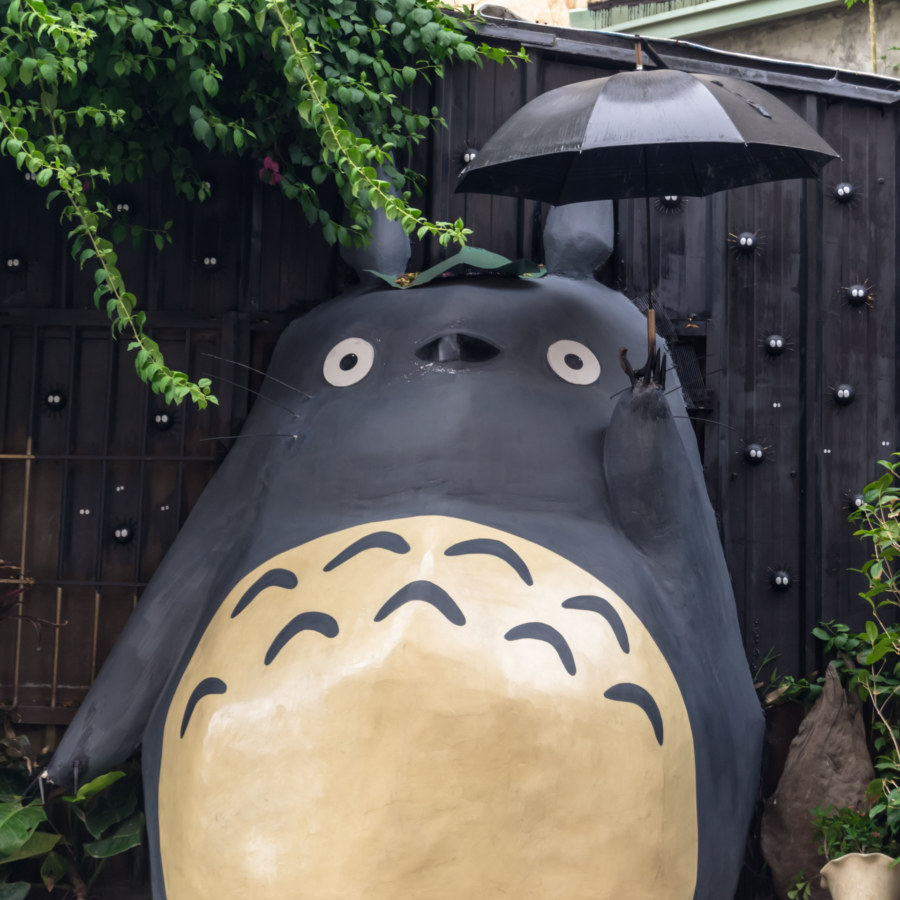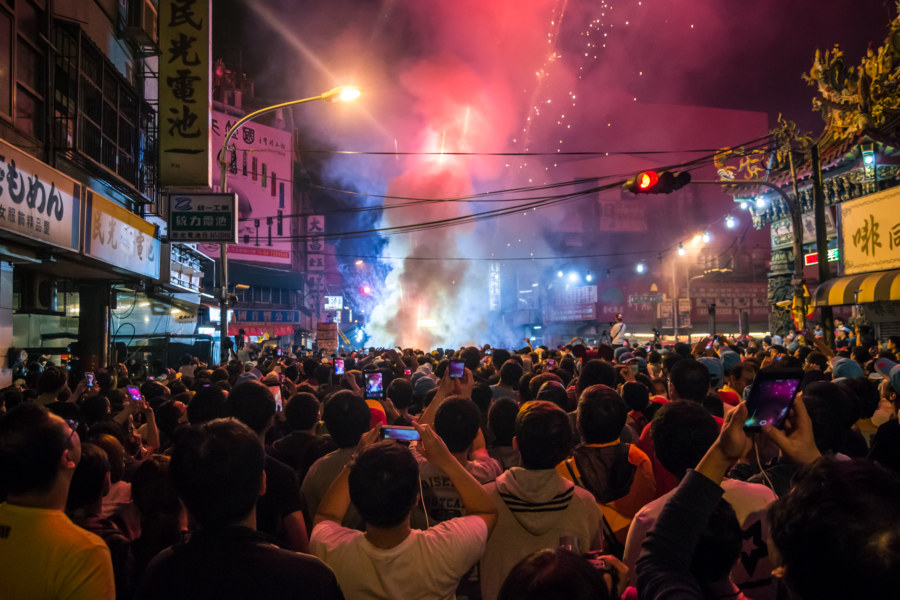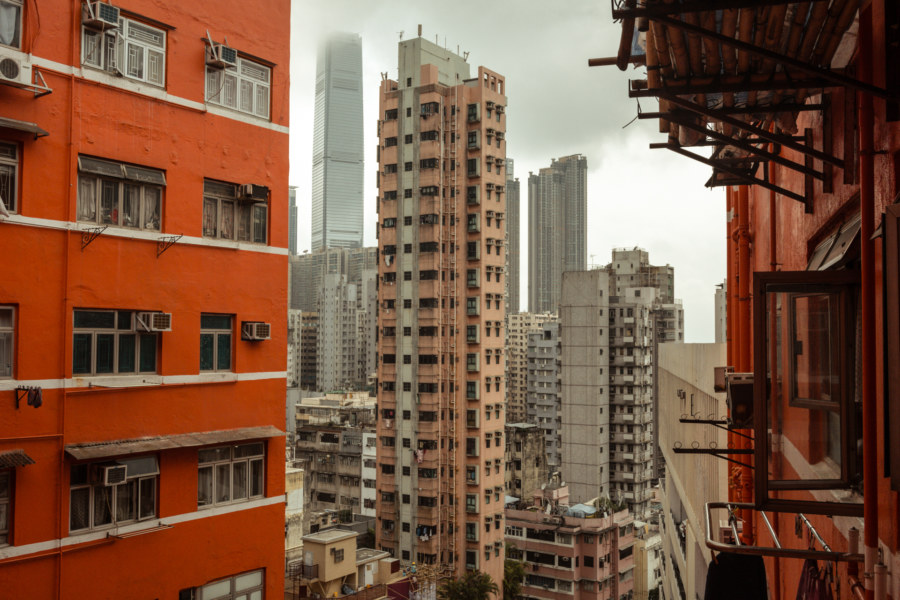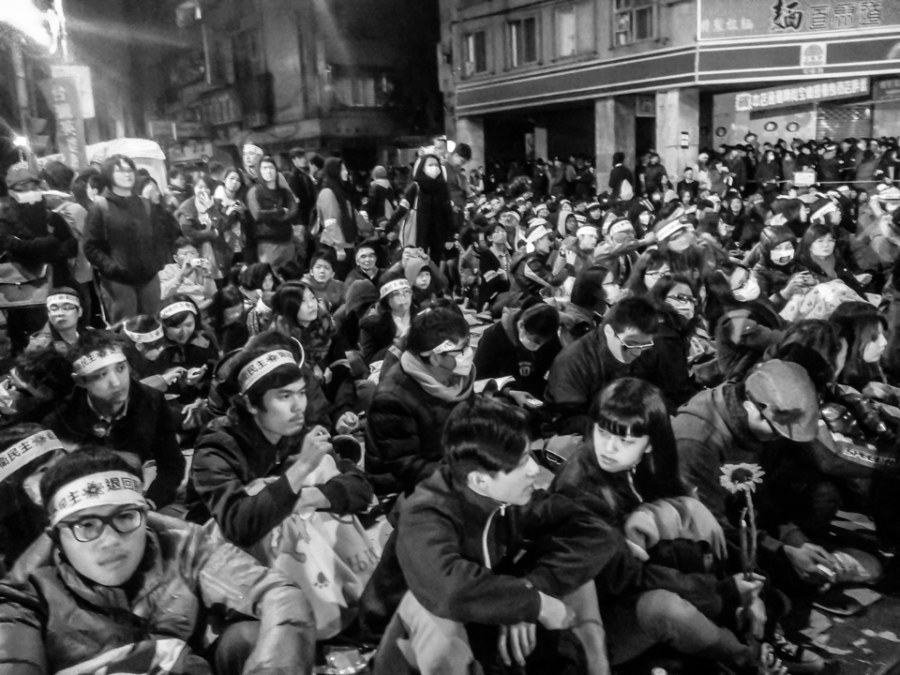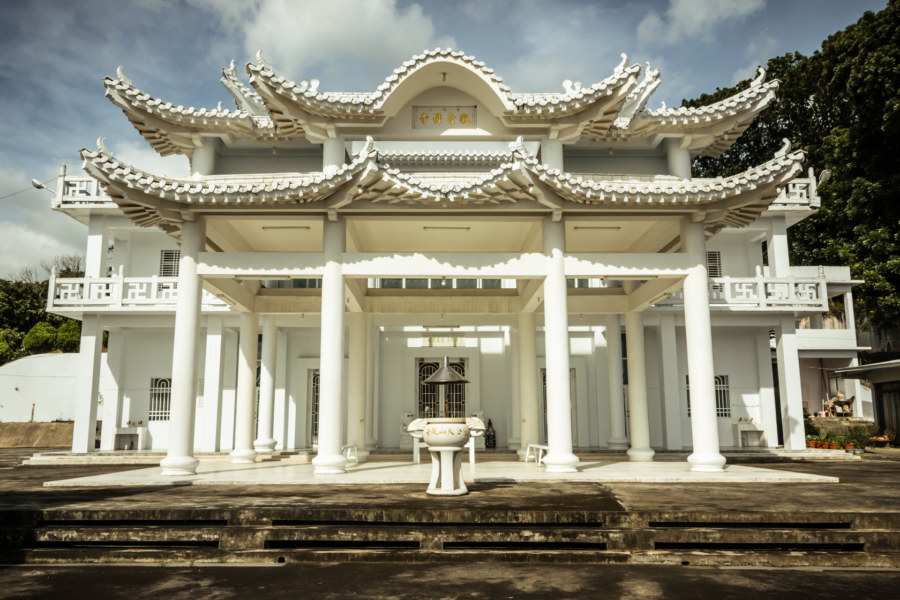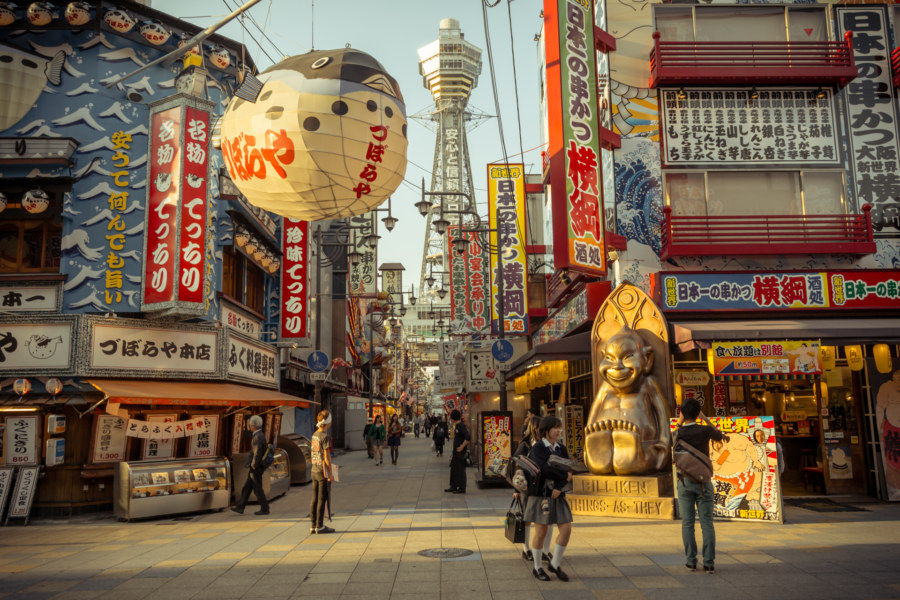I noticed this old-fashioned western-style mansion on the outskirts of Chaozhou in Pingtung while cycling through the deep south of Taiwan in 2015. In a sea of ugly metal shacks and bland concrete apartment blocks it is a rare pleasure to encounter a building like this one. I also enjoy the challenge of trying to learn something of the history of such places. Usually with some knowledge of the local area and the family name on the facade I can piece something together from blogs and government records—but this time I’m stumped, and I’m not the only one. Just about all that is known for certain is the name, Liu House 劉厝, which came up in some real estate records. Based on my growing familiarity with Japanese colonial era architecture I would guess this mansion dates back to the 1930s or so.
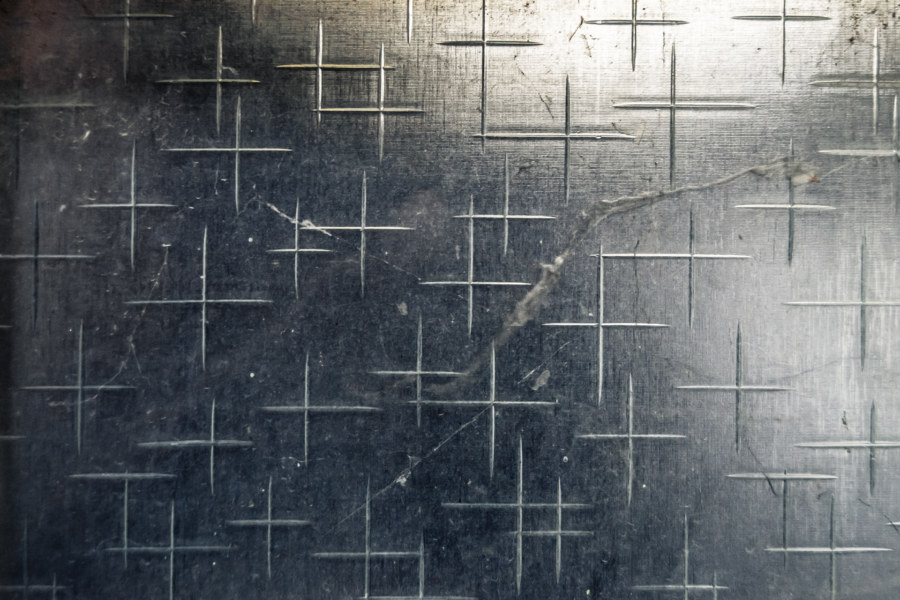
A top-level term for organizing content based on aesthetic.
Keelung Ghost House 基隆鬼屋
Keelung Ghost House 基隆鬼屋, formally the Línkāiqún Mansion 林開群洋樓 (and sometimes Keelung Lin Residence 基隆林宅), is one of the most famous ruins in Taiwan. Much like Minxiong Ghost House 民雄鬼屋 and Xinglin General Hospital 杏林綜合醫院, it commonly appears on lists of the most haunted places on the island. This ghostly reputation makes it difficult to separate credible information from the many tall tales that are told, particularly through the dark glass of machine translation.
Qiaoyou Building Supplemental
Recently I posted my full exploration of the Qiaoyou Building 喬友大廈, a towering ruin in the heart of Changhua City. It was a big building and I ended up capturing many more photographs than I ended up sharing there. Here, in this post, I’d like to share a few more photos I captured in black and white. I have also included a couple of images demonstrating how I digitally restore photographic negatives I find in the ruins (a technique discussed in more detail here). If you’re curious about this building be sure to see the original post.
Yumei Hall 玉美堂
Yùměi Hall 玉美堂, also known as known as Hóng Family Mansion 洪氏洋樓, is located in Jiālǎo Village 茄荖村, a small settlement on the eastern edge of Fenyuan in Changhua, Taiwan. Built in the late 1920s when the village was administered as part of Caotun in Nantou, it is one of only a handful of “Western-style” country manors built in central Taiwan during the Japanese colonial period (see my post about Jùkuíjū 聚奎居 for another great example).
Totoro Bus Stop in Taichung
Taiwan loves Totoro, the iconic star of Miyazaki’s animated classic My Neighbor Totoro. Known locally to Chinese speakers as Duōduōlóng 多多龍 (or 豆豆龍) and—my favourite—Lóngmāo 龍貓 (literally “dragon cat”), Totoro recently appeared on the streets of Taichung alongside Chibi and Chu Totoro, numerous makkuro kurosuke (soot sprites) and No-Face (who appeared in Spirited Away). These life-sized, fan-made sculptures have drawn so much interest that the site even appears on Google Maps as Dàlǐ Totoro Bus Stop 大里龍貓公車站.
Mazu Mania in Changhua City 媽祖繞境
My last night in Changhua City was surprisingly eventful thanks to a fortunate accident of timing. Earlier in the day I had noticed an unusual uptick in the amount of activity on the streets while cycling around. Banquet tents had been setup on major thoroughfares, police were standing at major intersections, scooters flying yellow banners were buzzing around like angry hornets, and the air was filled with a palpable sense of expectation and excitement. After an early supper next to a coffee shop I often work at I approached to one of the staff (who speaks passable English) and asked, “What’s going on?” Their answer, “It’s the…” Trailing off, hands aflutter, obviously searching for the right word—and then: “Mazu!”
Postcards From Kowloon 九龍明信片
Kowloon was my first experience of Asia back in 2012. Anytime I return to Hong Kong I stay there for at least a couple of nights. It helps that many of the most affordable hotels are located in Kowloon—but I also like how gritty, rundown, and real it is, particularly when compared to the naked display of wealth and privilege seen on the other side of Victoria Harbour on Hong Kong Island itself.
Last weekend I crossed the strait for a brief visa run and, after finding an excellent deal on a hotel on Agoda, once again found myself lost in the immensity of Kowloon. Naturally I spent a good part of my trip wandering around the city documenting my impressions. Collected here are several of my photos from this trip…
Remember the Sunflowers
A year ago the Taiwanese people stood up to their elected government and halted the passage of a controversial free trade agreement by occupying the Legislative Yuan. This act of mass civil disobedience was soon christened the Sunflower Student Movement. I was living in Taipei when it all went down and visited the protest on several nights to watch history unfold. I am not a professional photographer, political observer, nor journalist, so please excuse the poor technical quality of the images and lack of elaboration in this gallery. It is my hope that these pictures capture something of the spirit of those wild, uncertain nights when anything seemed possible.
Putuoshan White Temple 普陀山白衣道場
Pǔtuóshān White Temple (普陀山白衣道場) is one of the more unusual temples I have visited in Taiwan. Named after Putuoshan, one of the holy mountains of Chinese Buddhism, and dedicated to the worship of Guanyin (觀音), goddess of mercy, it appears to have been built in 2004. Apart from these basic details it seems like very little is known about this mysterious temple.
Nishinari and The Way Things Ought To Be
Nishinari is widely reputed to be the most run-down, crime-ridden, and dangerous part of Osaka—and about as close to a slum as you are likely to find anywhere in Japan. This may explain the preponderance of cheap backpacker accommodation in Shinimamiya, the area just south of Shinsekai 新世界 (literally “New World”), where I stayed for a single night last May before returning to Taiwan. Although I only had a few hours to work with I couldn’t resist wandering around Nishinari to see just how bad it was. I figured it couldn’t be any worse than the Downtown Eastside, the festering carbuncle of Vancouver, which I had wandered through on many occasions.
